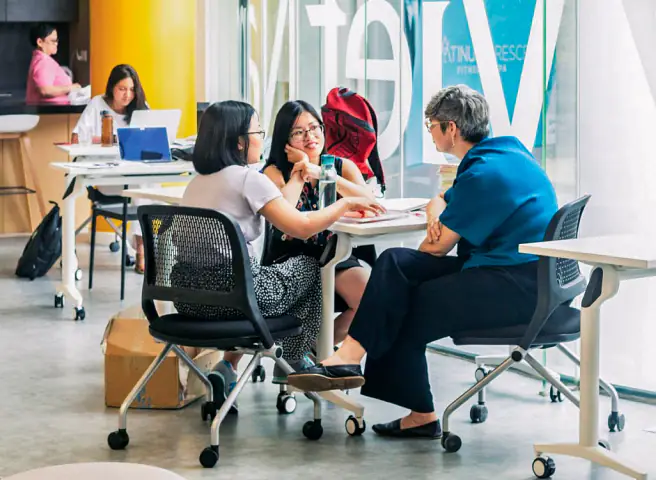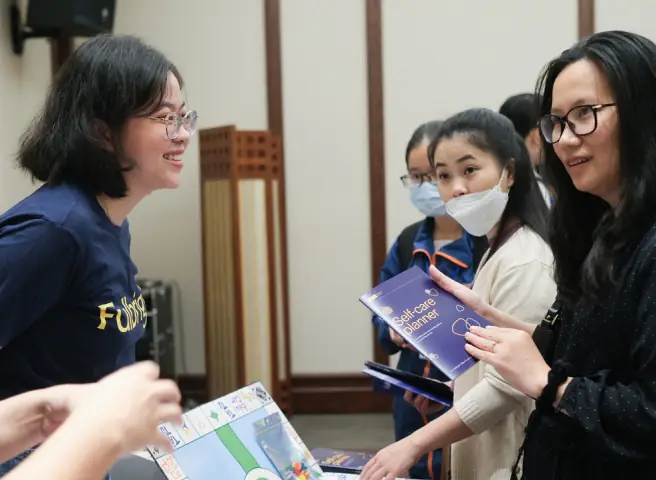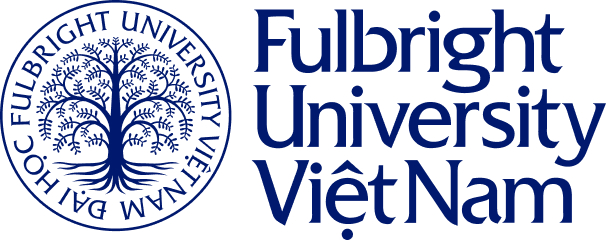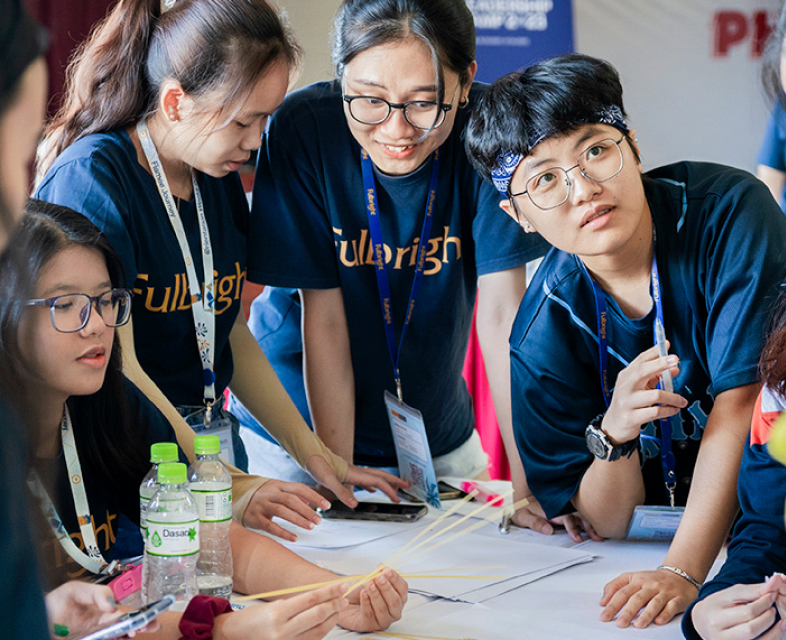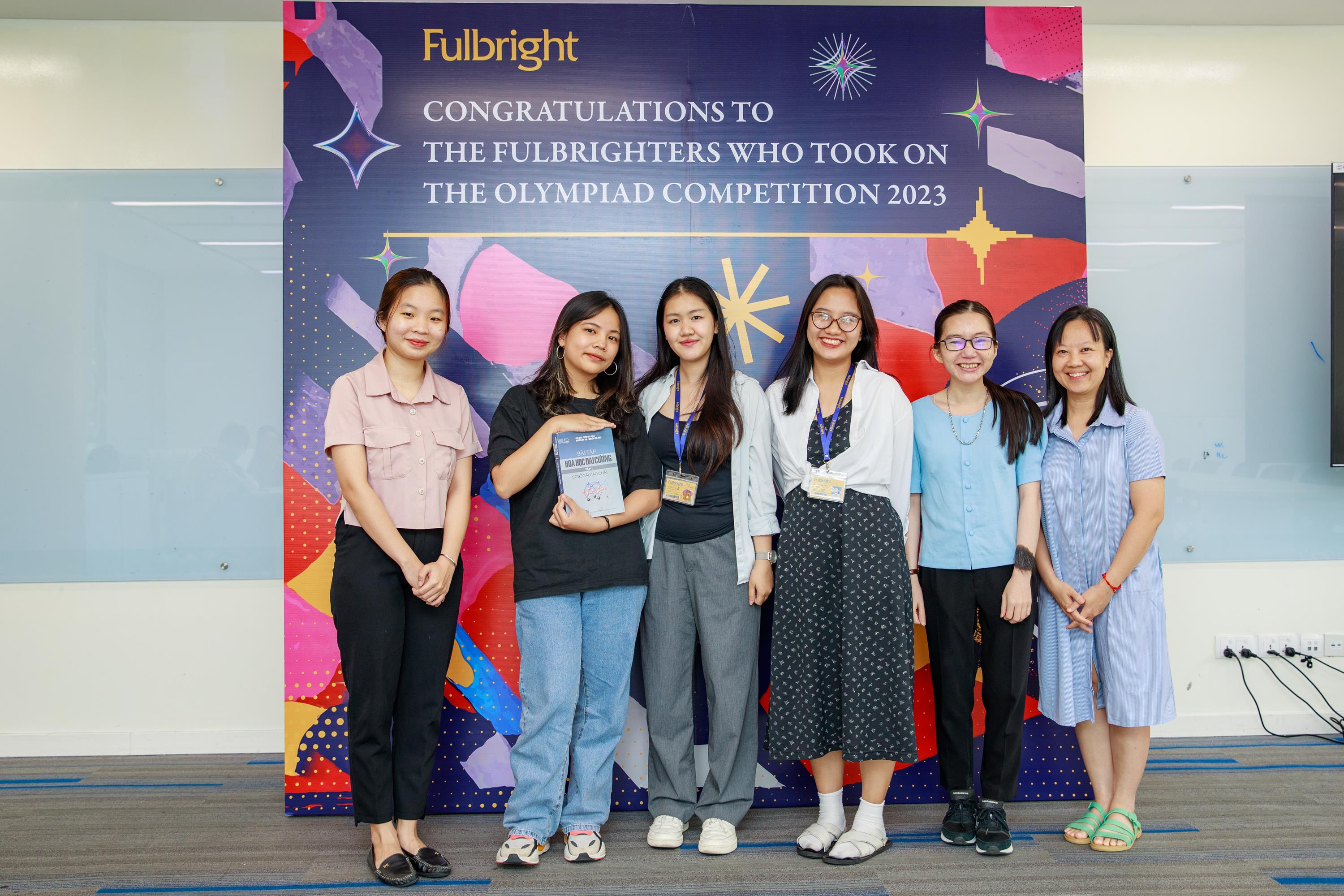
SHoP Architects co-founder Gregg Pasquarelli sat down with Fulbright to describe the process and inspiration that distinguishes Fulbright’s campus design and development.
To Build From the Ground Up
Why was SHoP first interested in the Fulbright campus project?
SHoP was interested in working on the Fulbright campus here in Ho Chi Minh for a variety of reasons. First of all, to envision a university from the ground up is an amazing experience and opportunity.
Secondly, I think Fulbright has challenged us to almost rethink what higher education is and to bring the ideals of the Vietnam and the ideals of the United States together in a single building, in a single campus, is an incredibly interesting opportunity. So, as architects, we were just thrilled with the challenge.
What aspect of the Fulbright project most excites you personally?
What excites me personally about the Fulbright project is to think that we are trying to design a campus and a school that will help the lives of thousands of young people, many of whom are not even born yet.
So, to sit here at this point and try to think about what will help people see the world in a different way 10, 20, 30, 40 years from now is incredibly inspirational. It makes me get excited every day when I wake up and start to draw.
SHoP mentioned “spaces for innovation.” We’re wondering what does SHoP do to support, build, and craft a “space for innovation?”
SHoP is fortunate enough that not only do we innovate within our own company and that it is a huge part of our culture, probably almost half our space in the office is just open. It doesn’t have desks. It doesn’t have rooms. It’s a place that can constantly change. So, we can test out new technologies.
We can test out new ideas. We can meet and talk and have groups come together to try and tackle really interesting challenges that we’re facing in the world. We’re also very lucky in the fact that we get to work for some of the best and most advanced technology companies in the world.
We’re building a lot of buildings in New York and in Silicon Valley. So, we see that these companies are doing the same thing as well.
Spaces that we can’t even envision today how a student in 10 or 20 years might use it. It’s about giving students the opportunity to control their own destiny, to invent their own ideas, and to solve problems in the world that we don’t know what they are at this point. So it’s that openness – that ability to gather – that is incredibly important.
Friendly. To the Environment and With Society.
Saigon/Ho Chi Minh City is moving toward being a ‘smarter’ city. What does SHoP envision a sustainable campus being? What does sustainability mean to you?
Ho Chi Minh City is an incredibly interesting and thriving metropolis. As a born and raised New Yorker, when I arrived here the first time, I felt the same energy in Ho Chi Minh that I feel in Manhattan every day. It’s diverse. It’s vibrant. It’s interesting. It’s growing. It’s young. It’s looking towards the future.
So, when I think about designing buildings in cities around the world, you try and tap into that energy. As a growing city – as in all the cities that are coastal – we’re facing big issues with sea level change, with climate change. We have to try and think about what that university will be, and what the conditions will be decades from now.
So, sustainability is incredibly important not just in the sense of technology having photovoltaic panels or other kinds of things. But also what the buildings feel like. How do they deal with the sun? How do they deal with the wind? How do they deal with sea level change?
The most sustainable thing you can do as an architect is make buildings that people love and that they take care of and that use high quality materials that last a long time.
You don’t want people to rip things down and renovate them every 20 years. That’s an environmental disaster. But building buildings that last 50, 100 200 years? That’s the most sustainable thing you can do.
What do you think defines a SHoP project?
A SHoP project is different than, I think, many other architects where they have a definitive, signature style. They always use a particular color, a particular shape, or a particular form.
SHoP is incredibly interested in working closely with our clients, thinking about the local context, using traditional materials, and taking those materials and using cutting-edge technology – laser cutters, robots – to take traditional materials and reinvent them into a new way of looking at those materials for the 21st century.
Are there ways that the general public can follow and be aware of what SHoP is doing?
I’m very fortunate to be a founding partner at SHoP and to have helped start this firm with my partners almost 20 years ago. We are working on incredibly diverse projects all over the world. Sometimes it’s hard for even me to keep up with everything we’re doing and innovating.
That’s what makes it exciting to go into the office every day, and to travel around the world, and to be able to connect with amazing clients like Fulbright. Right now, we have 19 major projects under construction around the world.
So, over the next two years many of these projects are going to be finished, and there will be a lot of press about them. You’ll be able to read quite a bit about them. But the best way to connect is when you are in New York is to stop by the firm and say hi. We’re constantly changing what we’re doing.
SHoP as Participants, Observers, and Learners
We’re wondering whether there will be possible workshops, discussions, meet and greets with the general public in HCM while planning, working, and constructing.
We would love to start to think about a public outreach process. On some of our projects we’ve had 20, 30, 40 meetings with the public and have people come in, show them the model, show them the ideas, talk about what we’re trying to do. We love listening to feedback. We love public engagement.
We also envision when the campus gets built that it’s not going to be a campus that has a wall around it and only people who are students and faculty have access. We see it as an asset for Ho Chi Minh City and an asset for Vietnam as a whole.
Anyone is welcome to walk on that campus, to meet the students, to talk to professors, to see what’s going on and to see the interaction. We’re designing the campus in a way that will always be welcoming.
You visited a lot of architectural places in Vietnam. What impressed you the most?
I think that what is interesting in Vietnam is the traditional Vietnamese village planning, how it’s different in the north, in the central, and in the south. Just learning that difference over thousands of years, how it emerged. Then to see the French colonial influences on the architecture. Then to see the Western influences on the architecture.
But most importantly to see how Vietnam is bringing these things together. I think that we haven’t even seen yet what a true Vietnamese architecture is going to be, because it’s going to blend those thousand years of history and what’s coming next in a country that is filled with so many young people looking toward the future.
I hope that our project is one tiny, little part that can push those visions forward. It’s just an amazing country and an amazing place to spend time.
What does SHoP hope to learn about Vietnam while working on the campus?
I want to learn how to be a better Vietnamese cook, for sure, because the food is so good here! It’s amazing!
I really will say this: Vietnam has an energy and an incredibly positive attitude about the future. It is a place that I just love being every time I come here. I’m happy. I’m energized. I’m inspired. The people are fantastic. They’re smart. They’re driven. You can see that it’s really a country about the future.
We feel honored to be able to spend time here and to be able to design a building that we think is going to be very important for the future of Vietnam. I can tell you that we have already learned so much just by spending time here.
But, definitely, I want to be a better Vietnamese cook.
